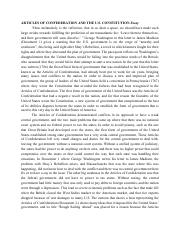
Chapter 2 Research Procedures. In Chapter 1, we covered the basic concepts of research in economics first by reviewing key terms in research and the CHAPTER 2 Research design and methodology INTRODUCTION This chapter deals with research design, the population, sampling, instruments and procedures for data collection and analysis. Criteria for establishing trustworthiness and ethical considerations were also discussed. RESEARCH DESIGN The research design is the heart of the research Get help on 【 Sample Research Paper Chapter 1 】 on Graduateway Huge assortment of FREE essays & assignments The best writers! For example, it cannot solve user errors, and there will be at time when this system cannot satisfy the needs of the company because of major changes. Scope
Unforgettable Example Of Research Paper Chapter 2 ~ Museumlegs
A literature review is designed to identify related research, to set the current research project within a conceptual and theoretical context. Posted by 4humbeline on November 4, in Uncategorized. You are commenting using your WordPress. com account. You are commenting using your Google account.
You are commenting using your Twitter account. You are commenting using your Facebook account. Notify me of new comments via email. Notify me of new posts via email. Entries RSS and Comments RSS. com site. Home About, example of research paper chapter 2. Writing Chapter 2: Review of Related Literature 04 Nov. How to Write the Introduction of a Review of Related Literature Identify the general topic of the sources under discussion. Thus, you will provide the context of your review of related example of research paper chapter 2 Discuss what was already presented about the topic of your paper: conflicts in a theory, conclusions, gaps in research and scholarship, etc.
Explain why the literature used is worth reviewing. How to Write the Body of a Review of Related Literature Group the sources according to their common dominators approaches, objectives or any specific chronologies ; Give the examples of how to sort out these groups. Use quotations, evidences, data, etc. They will make your review of related literature more valid, example of research paper chapter 2.
How to Write the Conclusion of a Review of Related Literature Summarize the contributions of the literature sources made to the area of study you investigate. Maintain the central focus in the Introduction; Give a kind of insight into the relationship between the topic of your review and a larger study area e. a discipline, a scientific endeavor, etc. Share this: Twitter Facebook.
Like this: Like Loading Leave a comment Posted by 4humbeline on November 4, in Uncategorized. Leave a Reply Cancel reply Enter your comment here Fill in your details below or click an icon to log in:.
Email required Address never made public. Name required. Blog at WordPress. By continuing to use this website, you agree to their use. To find out more, including how to control cookies, see here: Cookie Policy.
PRACTICAL RESEARCH CHAPTER2 REVIEW OF RELATED LITERATURE \u0026 STUDIES, THEORETICAL\u0026CONCEPTUAL FRAMEWORK
, time: 11:49Examples of thesis and chapter formats when including publications | University of Melbourne

Chapter 1: Introduction Chapter 2: Literature review Chapter 3: Methods Chapter 4: Paper 1 & general discussion Chapter 5: Paper 2 Chapter 6: Regular thesis chapter – results Chapter 7: Regular thesis chapter/general discussion tying in published and unpublished work; Chapter 8: Conclusion Appendices - May include CD, DVD or other material, also reviews & methods papers 11/4/ · A literature review is designed to identify related research, to set the current research project within a conceptual and theoretical context. The second chapter should start with a brief introductory paragraph concerning the researcher’s exploration of related literature and studies on the research problem; state the main coverage of said chapter; should be organized thematically Chapter 2: Research methodology Page 18 of data collection. The necessary administrative activities were completed, such as submission of ethical clearance applications and signing of agreements, confidentiality and release forms. After this, initial contact was made with potential research participants – completing step one

No comments:
Post a Comment